A beautiful Bradford Pear tree stood next to the cherry tree in my front yard. Over time, it grew and expanded until it’s branches spread so wide, it could hardly contain itself.
Season after season, the tree adorned my yard with splendor and provided a beautiful backdrop to an otherwise boring yard. The colors of the leaves were breathtaking in Autumn and the blossoms in Spring were refreshing. It even looked good in snow although that didn’t happen very often. The tree commanded a lot of space, but it was so pretty, I didn’t mind.
Sadly, one night a couple of weeks ago, there was a terrible storm and the wind blew so hard, it separated part of the tree from it’s trunk, and it came crashing down on the street. The once glorious tree was rendered helpless in one fell swoop.
Since the tree was in the middle of the road, the cars weren’t able to pass by. My house is at the beginning of the street so this presented a problem. Pretty soon, a crowd of my neighbors (and the police) gathered around to figure out how to get it out of the way. I stood there in the street looking at the fallen tree; my hand still bandaged from my recent surgery. I watched as my neighbors worked to get the tree out of the road. I felt pretty helpless, but it was awesome at the same time.
You could hear the sound of chop, chop, chopping and chain saws roaring as branch by branch, the limbs of the tree were removed from the road. They opened up one lane so that cars could get by.
I called a tree service the next day (Friday), but they weren’t able to come until Saturday morning. This meant the tree would have to lay on the other half of the road all day.
There was another storm Friday night, and I held my breath the whole time. Another tree fell, but in the backyard this time, and it wasn’t big enough to do any damage.
Saturday morning rolled around and the tree service called to tell me they would have to reschedule because they had an emergency. A tree had fallen on someone’s house.
I decided not to get upset because I remembered the community effort from the night my tree fell down. I was very fortunate. The tree didn’t hit my house or the power lines. I decided I should be patient.
I went about my business that Saturday all the while looking out the window at the tree that still lay halfway across the road and wondering if my neighbors were fussing at me every time they drove by.
Then late in the afternoon, another neighbor came by and asked if I wanted him to clear the rest of the tree from the road. He had a sheepish grin on his face and said, “I would really like the wood, and I need to test my chain saw. I just got it out of the shop.” I just laughed and said, “Go for it! Thank you!” Turns out he does woodworking as a hobby and this is what he wanted to do with the wood.
He and his wife cleared up the mess in the road and as a thank you, I gave them the wood (of course) and offered to bake them some bread. When I asked what type of bread they would like, my neighbor said, “a Batard!” He had tasted them in France and hadn’t been able to find one here that he liked.
I decided to try and make a batard that he would enjoy. The batard shape is one of my favorite shapes. I just wasn’t sure how well I would be able shape or score it with the stitches still in my finger. So I waited until I got the stitches out.
I finally made the bread last weekend. I’m still getting the mobility back in my finger so they were not the best loaves I’ve made in terms of shaping and scoring, but I’m fairly pleased with how they turned out taste wise.
These batards are made from a poolish baguette dough of white bread flour and about 12% whole wheat flour in the final dough. They had a wonderful flavor. My neighbor and his wife enjoyed the loaf I gave them. I also shared a loaf with a friend who enjoyed it as well.
I’ve been using the other loaf to make Tuscan Garlic Bread with garlic from my garden and olive oil from Tuscany. It’s so good!
Light Wheat Batards with Poolish
Makes: Four 1 -1.5 pound-loaves
Adapted from: Baguettes with Poolish from Bread: A Baker’s Book of Techniques and Recipes by Jeffrey Hammelman
Note: Depending on what time of year you bake this bread and if you include some whole wheat, you will probably need to add more water. I baked these loaves in the summer and had to add a good bit more water than the original formula suggested for the final dough.
Poolish:
- 10.6 ounces bread flour or all-purpose flour
- 10.6 ounces water
- pinch or 1/8 tsp. instant yeast
In mixing bowl, add the water and sprinkle the yeast over the top. Mix in the flour until smooth. Cover the bowl with plastic wrap and let it stand for 12 to 16 hours at about 70 degrees F. It was 78 degrees F. in my house so I only let it rest for about 10 hours before using.
Final Dough:
- 18.8 ounces bread flour or all-purpose flour
- 2.6 ounces white whole wheat flour (I used home milled)
- 10.6 ounces water, plus additional if necessary (I used ~ 1/2 cup more)
- 1 1/4 tsp. instant yeast
- 1 tablespoon kosher salt
For the final dough, add all of the ingredients, including the poolish, in a large bowl or in the bowl of a stand mixer. Mix using a stand mixer or by hand. I mixed the dough by hand using the fold-and-turn method in the bowl.
The dough should be supple and moderately loose. The desired dough temperature should be 76 degrees F.
Let the dough bulk ferment for 2 hours if mixed in the stand mixer, with one fold after the first hour.
I let it ferment for 3 hours with folds every 30 minutes for the first 2 hours, then I let it rest for the final hour.
Divide the dough into four equal pieces. Preshape lightly into rounds, cover, and let them rest on a lightly floured surface for 20 to 30 minutes. Once the dough has relaxed sufficiently, shape the rounds into batards and place the loaves between folds of a couche. Be sure to leave enough space between each batard so they have enough space to expand.
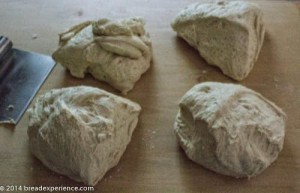 |
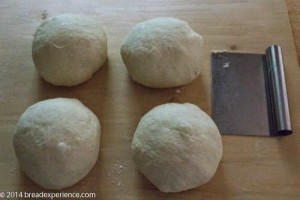 |
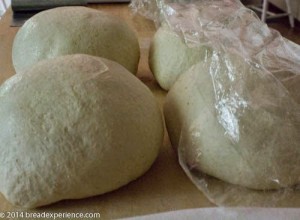 |
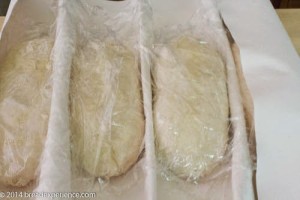 |
Cover the loaves with plastic and baker’s linen to prevent a crust from forming on the surface of the loaves.
Let the loaves ferment for 1 to 1 1/2 hours at 76 degrees F.
Score the loaves in the pattern of your choice. I scored three of the loaves down the middle and added some decorative slashes along the sides. I scored the other loaf with 3 slashes.
Preheat the oven to 475 degrees F. with a baking stone on the bottom rack and an iron skillet on the top shelf.
Slide the loaves directly onto the baking stone or transfer the loaves to parchment paper dusted with cornmeal and then transfer the parchment paper (with the loaves) onto the preheated baking stone.
Quickly add several ice cubes to the iron skillet to create steam. Be careful not to burn yourself.
Bake the loaves for 25 to 30 minutes. They should be golden brown and sound hollow when thumped on the bottom.
Alas, this is all that is left of the pear tree. The tree service finally took down the rest of it along with some other trees in my yard.
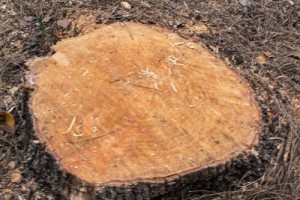 |
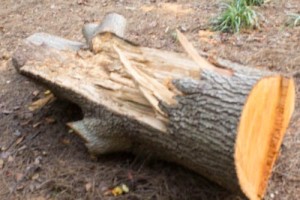 |
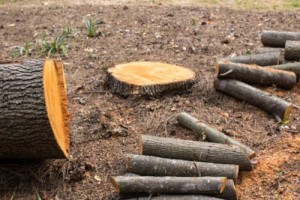 |
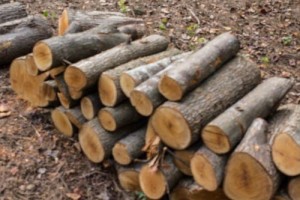 |
Although the tree is gone, the stump makes a great prop for a photo, and I have a bunch of firewood to enjoy in my fireplace.
The Cherry tree is on it’s own now, but it will have the sunlight it needs and the strength to carry on. Just like me…
Happy Baking!
Cathy
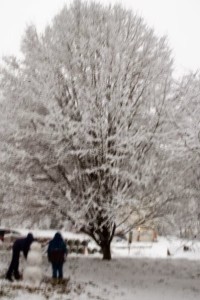
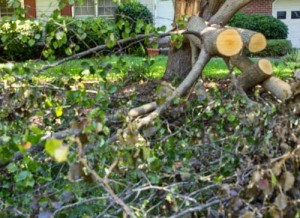

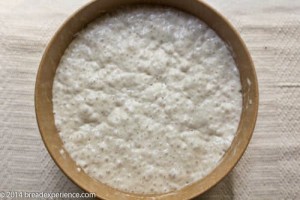
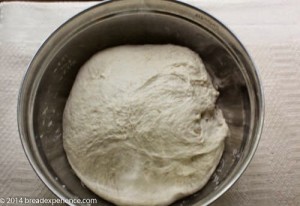
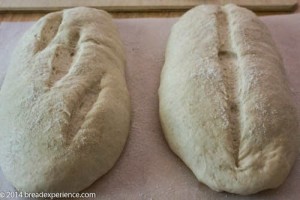
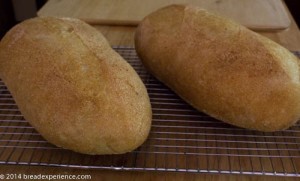

Leave a Reply